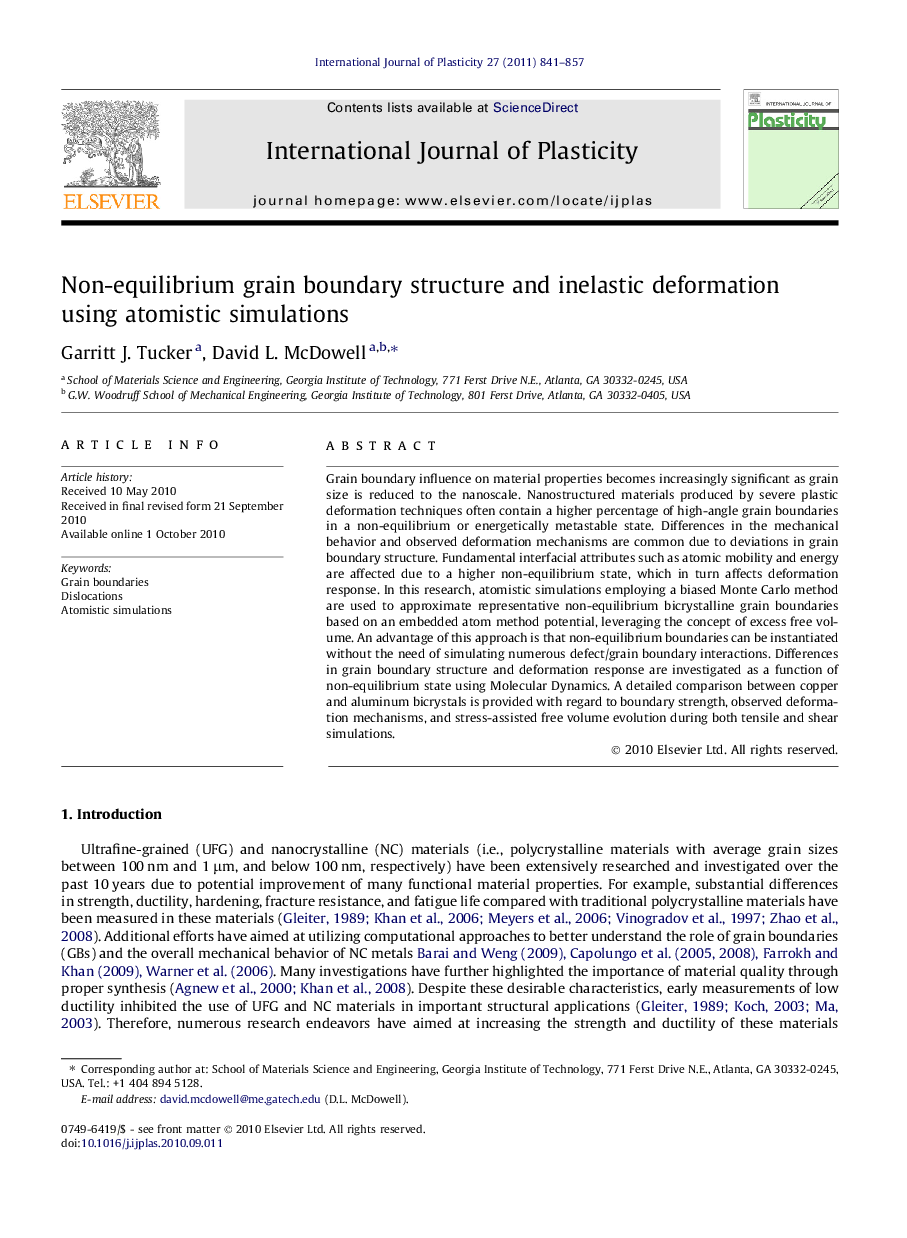| Article ID | Journal | Published Year | Pages | File Type |
|---|---|---|---|---|
| 789166 | International Journal of Plasticity | 2011 | 17 Pages |
Grain boundary influence on material properties becomes increasingly significant as grain size is reduced to the nanoscale. Nanostructured materials produced by severe plastic deformation techniques often contain a higher percentage of high-angle grain boundaries in a non-equilibrium or energetically metastable state. Differences in the mechanical behavior and observed deformation mechanisms are common due to deviations in grain boundary structure. Fundamental interfacial attributes such as atomic mobility and energy are affected due to a higher non-equilibrium state, which in turn affects deformation response. In this research, atomistic simulations employing a biased Monte Carlo method are used to approximate representative non-equilibrium bicrystalline grain boundaries based on an embedded atom method potential, leveraging the concept of excess free volume. An advantage of this approach is that non-equilibrium boundaries can be instantiated without the need of simulating numerous defect/grain boundary interactions. Differences in grain boundary structure and deformation response are investigated as a function of non-equilibrium state using Molecular Dynamics. A detailed comparison between copper and aluminum bicrystals is provided with regard to boundary strength, observed deformation mechanisms, and stress-assisted free volume evolution during both tensile and shear simulations.
